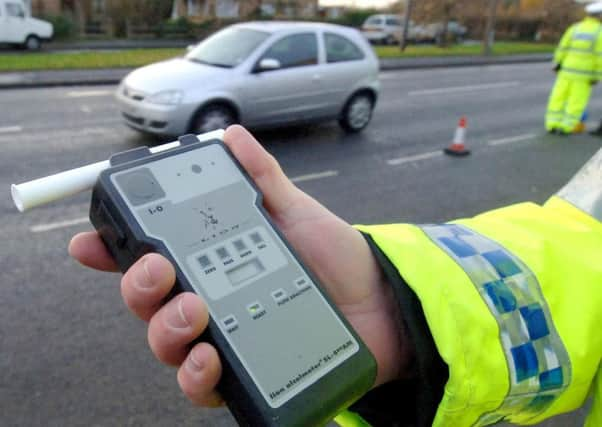Reduction in drink drive detections


They are well aware that just one drink driver can cause untold carnage on local roads so, while they are pleased to see fewer people taking a chance, they are adamant that their battle will go on.
This year, police made 26 detections in Causeway Coast and Glens area - down on the figure of 35 from last year.
Advertisement
Hide AdAdvertisement
Hide AdIn Londonderry and Strabane areas there was a reduction in detections from 27 last year to 28 in 2016/2017.
Overall, the number of drivers and motorcyclists detected drink driving during the 2016/17 winter anti-drink drive operation is down very slightly by 4%, compared to the same time last year.
According to preliminary figures, 383 drink drivers were detected between 24 November 2016 and 3 January 2017, 16 less than during the previous winter operation.
Commenting on the figures, Assistant Chief Constable Alan Todd said, “When we launched this operation at the end of November, we warned drivers not to take the risk because we would be using new legislation to perform random breath tests at vehicle checkpoints day and night across the country.
Advertisement
Hide AdAdvertisement
Hide Ad“We tested nearly 11,000 people – a 125% increase in the number of preliminary roadside breath tests compared with the previous operation. 383 People failed those tests; so once again, it is difficult to accept these figures as a success.
“One person was detected at over four times the drink drive limit, with a reading of 149 micrograms of alcohol in 100 millimetres of breath while the legal limit is 35 micrograms of alcohol in 100 millilitres of breath. We’ve had people literally falling out of their cars and people detected throughout the day and night across the country.
“Nearly 300 people received warnings because while they provided a positive breath sample, they were below the legal limit. We shouldn’t be detecting people driving with any alcohol in their system. It’s disappointing that despite our continued warnings, publicity and media coverage generated by this policing operation, that a minority of people completely disregarded the safety of themselves and others by continuing this shameful and incredibly dangerous practice.
“Nearly 400 people across Northern Ireland are now facing the stark reality a court appearance where they will most likely lose their driving license for one or more years, be fined, and will have great difficulty in obtaining car insurance in the future.
Advertisement
Hide AdAdvertisement
Hide Ad“Many also risk losing their jobs or going to jail. The alternative consequences had they not been caught do not bear thinking about. Each one of these drink-drive detections has potentially saved lives.
“Police will continue to detect people who insist on driving after having taken drugs or alcohol. We are again appealing for all motorists to consider the consequences of their actions. Just do not take the risk of having even one drink if you are driving. The consequences, as police officers and our emergency service colleagues witness first hand, can be catastrophic.
“I am also appealing for all road users and pedestrians to exercise caution and put road safety first. With longer hours of darkness and the recent arrival of winter weather, road users need to make extra effort to look out for pedestrians and cyclists particularly along rural roads. Pedestrians and cyclists should wear bright clothing, reflective jackets or armbands where possible to ensure they can be seen.
“If everyone slowed down, did not drive after drinking or taking drugs, wore a seatbelt and drove with greater care and attention then together we can save lives on our roads.”